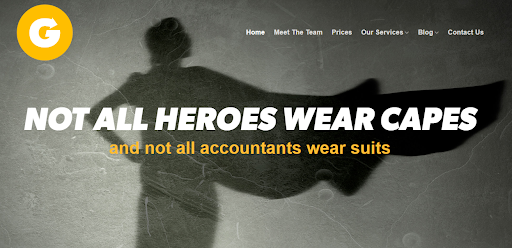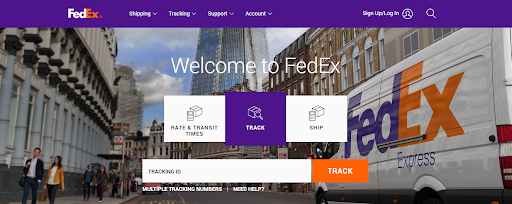To know if you need a new brand or website, you must first understand the true meaning of a brand.
Your brand represents everything about you and your firm. It’s the emotions your clients and prospects feel when they meet you, speak to you, see your offices, view your website, follow you on social and view your swag. It creates the first impression and builds the foundation of your relationships with everyone you meet.
“Your brand is what other people say about you when you’re not in the room”
– Jeff Bezos, Amazon
This is why you have to pay attention to your brand first.
Without it, your prospects won’t fully understand who you are.
It will cause confusion and will slow down their buying process and they will spend longer trying to build the trust needed to commit. Your content won’t have the core messages needed to attract your target audience and you’ll spend longer creating design elements for your website, socials and print media. More revisions to get things right means more time, more effort, and more money.
So before you look at your website, ask yourself 3 questions about your brand:
1. Does your brand truly reflect who you are?
Your brand needs to match your values. If your core company values are ‘creativity’, ‘innovation’ and ‘quality’ for example, every design element reflecting your brand (your logo, website, swag, business cards etc.) needs to be creative, innovative and of high quality. If your brand doesn’t match your values, your buyer will see all the values in your content, but these won’t be lived out throughout your website. Subconsciously, this will create a lack of trust, a concern and a general slowing down of the buying process.
Colour plays a huge role in your brand too. Red represents boldness, power and strength, whilst green represents nature, growth and safety. Identify colours revealing your values and liked by your target audience.
The imagery you use on your site is a massive part of your brand and careful thought needs to go into what types of images you use. If your firm works mostly with family businesses and is caring, generous and helpful for example, use images to attract people looking for those services and qualities. Softer colours like greens and blues, bright, light designs and images showing happy families. These colours must match the colours you decided were a fit with your target audience during your branding process.
Golding Accountancy do this well. Their tagline is “Not all heroes wear capes and not all accountants wear suits” and their brand highlights this theme perfectly. Their logo and imagery are comical, focusing on superheroes, and their content is playful and fun.
Part of this came from when we went to Golding’s offices for a branding workshop. We noticed comics and comic books everywhere – on the table, on computer desktops, on canvas prints waiting to be put on the wall. (We pulled those out and had them up on the wall by the end of the first day.) They were already living this out: so we brought it into the website so what they were doing offline naturally was being showcased online.

“Determine who you are and what your brand is, and what you’re not. The rest of it is just a lot of noise.”
– Geoffrey Zakarian
2. Does your brand carry a story?
Is your company name just your last name or does the name & colours come from a meaningful story?
For example, the Adobe computer software was named after the Adobe Creek which ran behind the house of one of the co-founders.
The social media platform, Twitter, started out as Twitch and later became Twitter as the dictionary definition described the product perfectly – ‘a short burst of inconsequential information’.
We love hearing the reasons behind the name and we’ve heard some incredible stories from our clients. Maverick came from a conversation with the owners of that firm, in which they said “we want to be the mavericks of the accounting profession”. Cerebral, on the other hand, came from long drawn-out conversations about their target market of health and medical practices, the issues and problems they had, the trouble trusting accountants and financial experts, and the need to show a high level of trust and confidence.
Your clients and prospects will love to hear your story too. It’s what makes you human, genuine and approachable. Don’t hide what makes you different; lead with it.
3. Does your brand deliver for the intended audience?
Many of our clients who we’ve helped in the past have relied heavily on their friends and family for opinions and comments. We’ve also experienced accountants who have not liked a certain brand colour, but later realised it was the best colour for their target audience.
Remember, the brand you have created is not for you, your friends or family. It’s for your prospects and your clients. If they like it, are attracted by it and it truly represents who you are as a firm, you are on the right track!
If you’re unsure on any of these questions, it may be time to think carefully about your brand before going further. You can start with a few online sessions customised to you and your firm with the PF team in a branding workshop.
Now you’re ready to move to the website. What changes do you need to make to your site so it properly reflects your brand?
Review where your website does and doesn’t match your true brand
- Check your content for style and tone of voice. Will your prospects and clients hear the same style and tone of voice when they meet with you? Is the content on-brand and does it really speak to the issues your clients and prospects are dealing with?
- Review the photographs and images you’ve used. Are they custom, stocky or real images? While on-brand content and the language you use is crucial to your marketing, imagery and the way the content appears is just as important. Visuals make you memorable and recognisable. The more you invest in your imagery and design elements, the more impact you have on your prospects.
- Ensure you’ve used consistent fonts and colours which match your values.
- Check your logo is interesting, memorable and proudly shows off your firm name.
Show off your core messages so they are easily visible
- Review your core messages and where they are placed on your site. Your prospects need to easily see who you are, what you do and who you help within a few seconds of viewing your website.
- Write your core messages so the content is about the client or prospect and not about your firm. Be careful of using words like ‘we’, ‘our’, ‘us’ and focus on words like ‘you’ and ‘your’.
Highlight the issues your prospects & clients have and how you can help
- Show your prospects you understand their business and the issues they are going through.
- Use phrases your potential buyer will respond to. They don’t want to hear about all the services you can offer them, but rather about the ways you can improve their business and personal lives. Things like ‘have more time to do the things you love’, ‘feel less overwhelmed’, ‘sleep better at night knowing your finances are taken care of’. Don’t sell them a list of services, sell them a better way of life.
Write strong calls-to-action clearly leading your prospects towards a conversion
- Avoid phrases like ‘get in touch’ unless this is genuinely what you want them to do. Instead, use direct phrases more specific to the action you want them to take.
- Map out your website and plan the route you want your client or prospect to take throughout your website. Think about what you want them to do on each page. It may be to contact you, fill in a form, book a meeting, download a guide, sign up to a newsletter, register for an event, follow you on social, or just click through to another page. Each of these items are conversions when actioned.
Show proof you know what you are talking about
- Create free, valuable content in the form of blogs, downloadable guides, checklists and tips on your website. A big part of the buy-in process is confirmation you really have the expertise and knowledge to help the prospect with their needs.
- Have a brainstorming session with your team and write down all the questions you’ve ever been asked by clients and prospects. This will help determine where to start with your helpful content. Then write content to answer these questions. Read ‘They Ask You Answer’ by Marcus Sheridan for more details on this approach.
Display links to your socials to reinforce your brand
- Check you’ve included the relevant links to the social media platforms you are on. Measurement of your online presence is another step of the buying process. The natural step after viewing your website is to have a look at your socials. Not sure which social platforms to use? Start with the platforms your target audience are using.
- Ensure your social media platforms are on-brand with recent posts. This helps create trust and reinforces your brand.
If your brand doesn’t truly reflect who you are, your buyer will struggle to decide whether to work with you – and worse, may decide not to bother at all. Once you decide to rebrand, you’ll need to redo your website to ensure your brand is consistent across all your marketing platforms.
If your existing website doesn’t have these elements, and is slowing down your buyer, start with a website workshop so you know where to begin.
“If people believe they share values with a company, they will stay loyal to the brand.”
– Howard Shultz, CEO of Starbucks
Now, make sure your brand is reflected throughout your marketing
Your brand is central to everything your accountancy firm does in relation to marketing. This includes not only your website, but also your social media platforms, your signage, your swag and your stationery.
Fedex does this really well. Their brand colours, orange and purple, are reflected across their website and their social accounts and their signage and swag includes t-shirts, boxes, delivery vans and even planes. Their logo and brand is easily recognisable on every marketing platform.




My last piece of advice: Be true to yourself and your firm.
“Stay true to your values. That’s why you were a success in the first place, and that’s how you make incredible things happen.”
– Rafe Offer
All the best,
Ashlea

